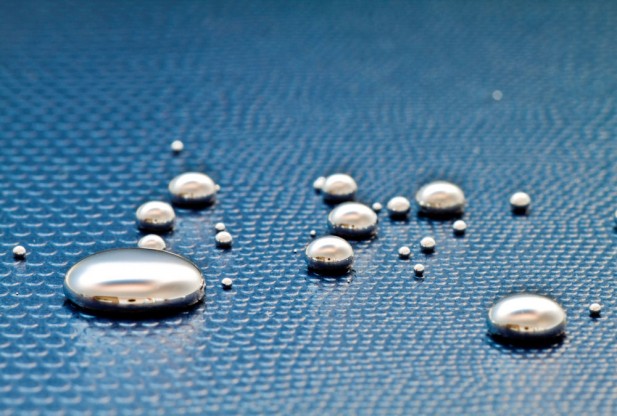
© Thinkstock.com
Significant reductions in mercury emissions will be necessary just to stabilize current levels of the toxic element in the environment, according to new research from a team led by Harvard University.
Surface reservoirs, such as soil, air and water, hold an enormous amount of mercury from past pollution going back thousands of years. Scientists believe it will continue to persist in the ocean and accumulate in
fish for decades to centuries.
"It's easier said than done, but we're advocating for aggressive reductions, and sooner rather than later," says
Helen Amos, a PhD candidate in Earth and Planetary Sciences at the Harvard Graduate School of Arts and Sciences. The findings of this study were published in a recent issue of
Global Biogeochemical Cycles.
Amos worked with a team of researchers from the the Atmospheric Chemistry Modeling Group at the Harvard School of Engineering and Applied Sciences (SEAS) to collect historical data concerning mercury emissions as far back as 2,000 BC. The team has also been building environmental models of mercury cycling that captures the interactions between the atmosphere, oceans and land.
Most of the mercury emitted to the environment ends up in the ocean within a few decades, the model reveals. The mercury remains in the ocean from centuries to millennia. Currently, emissions of mercury are mainly from coal-fired power plants and artisanal gold mining. The mercury is thrown into the air, rained down into lakes, absorbed by the soil and carried by rivers, eventually finding its way to the sea. Once there, aquatic microbes convert it to methylmercury, the organic compound that accumulates in fish, finds its way to our dinner plates, and has been associated with neurological and cardiovascular damage.
People have long assumed mercury pollution began with the Industrial Revolution. The truth is humans have been releasing mercury into the environment for thousands of years. Prior studies found mercury stored in peat in Europe and layers of sediment at the bottoms of lakes in South America, as well as use by ancient Greeks and Chinese as pigments. Posts of quicksilver have been found in tombs dating back to 2000 BC; and as early as 1900 BC, the Assyrians are presumed to have used quicksilver and cinnabar (the bright red ore in which mercury naturally occurs). Spanish colonists in Central and South America used mercury to extract silver in 1570 AD, while 300 years later mercury was used in the California gold rush.
A certain amount of mercury is naturally released into the environment through each volcanic eruption. The new Harvard model, however, demonstrates human intervention has been, and will continue to be, responsible for the majority of the mercury currently found in the surface reservoirs.
"Ideally, mercury released by human activities would quickly be sequestered in the environment, but instead what we see is a huge quantity of it bouncing from one reservoir to the next," explains
Elsie M. Sunderland, who is the Mark & Catherine Winkler Assistant Professor of Aquatic Science at the Harvard School of Public Health and an associate in environmental science and engineering at Harvard SEAS. "This means it continues cycling throughout the environment and persists for much longer timescales than most people realize which has implications for long-term biological exposures."
The impact of historical emissions deduced from archaeological and anthropological research into artisanal and industrial techniques is quantified by the new model, which also couple seven different environmental systems into one holistic and coherent model.
"This model is built on the best available science, and what it's showing us is that if we want to reduce the amount of mercury in the environment, it's not enough to simply stabilize the amount that we're emitting," says Amos. "We would need to dramatically reduce it."
The team says their results also draw attention to the contribution of historical emissions to the present-day mercury problem.
"Today, more than half of mercury emissions come from Asia, but historically the US and Europe were major emitters," says
Daniel J. Jacob, Vasco McCoy Family Professor of Atmospheric Chemistry and Environmental Engineering at Harvard SEAS and Professor of Earth and Planetary Sciences. "We find that half of mercury pollution in the present surface ocean comes from emissions prior to 1950, and as a result the contribution from the US and Europe is comparable to that from Asia."
The study also found anthropogenic emissions have increased the amount of mercury in the atmosphere, surface ocean, and deep ocean by factors of 7.5, 5.9, and 2.1, respectively, compared to natural conditions, with at least half of the anthropogenic mercury content of the surface ocean originating before 1950. Another key finding is that 60 percent of the mercury currently in the atmosphere comes from legacy mercury that continues to cycle through the environment.
"The projections of atmospheric mercury deposition and ocean concentrations that have informed policymakers developing the recent global mercury treaty underestimated the amount of future accumulation, because they did not account for the full burden of legacy mercury in the environment," notes Sunderland. "Our study reinforces the need for immediate and stringent emissions controls globally, to the extent technologically possible, to avoid future human health risks. Already, the costs of methylmercury exposure in Europe and the United States have been estimated at upwards of $15 billion."
Source: Global Biogeochemical Cycles
Reader Comments
to our Newsletter